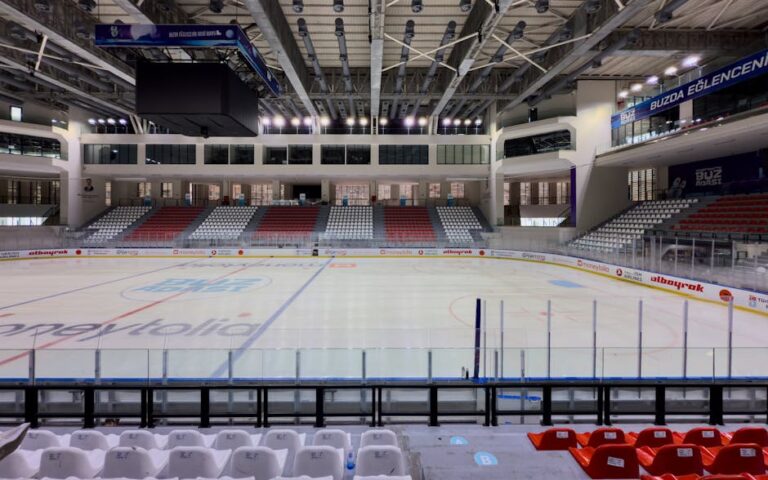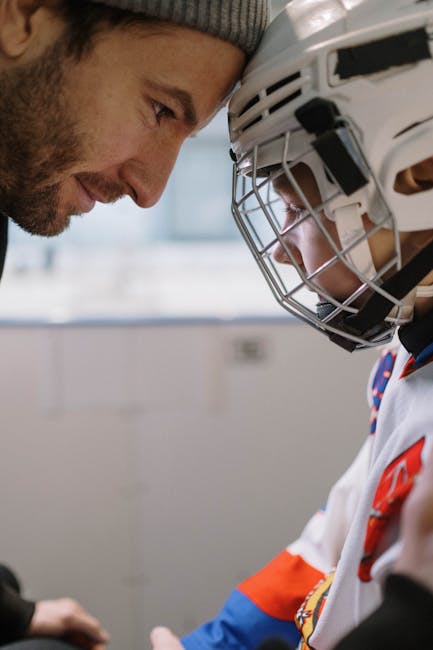Hockey Referee Injuries: Prevention, Treatment, and the Fight for Player Safety
Hockey Referee Injuries: Prevention, Treatment, and the Fight for Player Safety
The electrifying speed, bone-jarring checks, and intense physicality of hockey make it a captivating spectacle for fans worldwide. However, beneath the surface of exhilarating gameplay lies a significant risk: injury. While players are often the focus of injury prevention and recovery discussions, a crucial element is often overlooked – the well-being of hockey referees. These unsung heroes, tasked with maintaining order and fairness on the ice, are frequently exposed to the same high-impact collisions and unpredictable movements that endanger players, resulting in a unique set of injuries and challenges.
The Unique Risks Faced by Hockey Referees
Unlike players who wear protective equipment designed for specific positions and actions, referees’ attire offers relatively limited protection. While they wear helmets, shoulder pads, and shin guards, these are often less robust than those worn by players, leaving them vulnerable to a wide array of injuries. The unpredictable nature of the game adds another layer of complexity. Referees must react quickly to swiftly changing situations, often leaving them with little time to protect themselves from errant sticks, pucks, and skating players. This increases their risk of injury significantly compared to players who, to some degree, can anticipate and prepare for contact.
Common Hockey Referee Injuries
- Head Injuries: Concussions are a significant concern, often resulting from collisions with players or stray pucks. The severity can range from mild to severe, potentially leading to long-term neurological issues.
- Shoulder Injuries: Rotator cuff tears, dislocations, and sprains are common due to the constant need to brace for falls or collisions.
- Knee Injuries: ACL tears, MCL tears, and meniscus injuries are often the result of sudden changes in direction or impacts.
- Lower Extremity Injuries: Ankle sprains, fractures, and leg contusions are prevalent due to the slippery ice and potential collisions with players’ skates.
- Back Injuries: Repeated bending, twisting, and falls can lead to strains, sprains, and herniated discs.
- Facial Injuries: Cuts, bruises, and broken noses are common due to contact with pucks and sticks.
Prevention Strategies: Protecting Our Referees
Addressing the high incidence of referee injuries requires a multifaceted approach involving education, equipment improvements, and rule modifications. Promoting a culture of respect and awareness among players and coaches is paramount. Referees need to be treated with the same respect and care as the players themselves. This includes teaching players to avoid contact with officials and showing caution when skating near them. Improved officiating training that emphasizes positioning and evasion techniques is essential.
Enhancing Protective Equipment
The current protective equipment worn by referees can be upgraded to offer better protection. Research into advanced materials that offer superior impact absorption and durability is crucial. This might involve exploring lighter, yet stronger, materials for helmets, shoulder pads, and shin guards. Investing in specialized knee and elbow pads designed for the unique movements of referees could also significantly reduce injury rates.
Rule Changes and Enforcement
Stricter enforcement of rules regarding player-official contact is a critical element of injury prevention. Penalties for unnecessary contact with referees should be consistently and firmly applied to deter players from engaging in such behavior. Rule modifications that minimize high-speed collisions in critical areas of the ice, such as near the benches and around the net, could also be considered. This requires careful evaluation to ensure that it doesn’t negatively impact the flow of the game.
Treatment and Rehabilitation
Effective treatment and rehabilitation are vital for referees recovering from injuries. Access to high-quality medical care, including sports medicine specialists and physical therapists, is crucial. Early intervention is key in managing injuries and preventing long-term complications. Customized rehabilitation programs should focus on restoring strength, flexibility, and range of motion, allowing referees to return to the ice safely and effectively.
Long-Term Effects and Support
Some hockey referee injuries can have long-lasting consequences, impacting mobility, physical function, and even mental health. Providing access to ongoing support services, including mental health counseling and long-term pain management, is crucial for the well-being of referees who have sustained significant injuries. Organizations should establish support systems that provide both financial and emotional assistance to injured officials.
The Future of Referee Safety
Improving the safety of hockey referees requires a collaborative effort from all stakeholders. Players, coaches, league officials, and equipment manufacturers must work together to reduce the risks faced by these essential members of the hockey community. This includes continued investment in research, advancements in equipment technology, and stricter enforcement of rules designed to protect officials. Addressing referee injuries is not only a matter of fairness and responsibility, but also about preserving the integrity and future of the sport itself.
Advocacy and Awareness
Raising awareness about the unique challenges and injury risks faced by hockey referees is essential. Advocacy groups and organizations can play a crucial role in promoting research, pushing for rule changes, and improving safety standards. Increased media attention to referee injuries can help to shift public perception and prioritize the safety of these vital contributors to the game.
Technological Advancements
Technology can play a significant role in enhancing referee safety. For instance, the use of wearable sensors could track player movements and identify potential collisions, giving referees advance warning and allowing them to better position themselves to avoid impact. Similarly, video technology and enhanced officiating reviews could help to accurately assess player behavior and punish those who intentionally or recklessly endanger referees.
Mental Health Considerations
The mental and emotional toll of officiating hockey, particularly following injury, should not be overlooked. Referees frequently face verbal abuse and criticism from players, coaches, and even fans. They need access to resources and support systems to manage stress and cope with the psychological consequences of potentially dangerous situations on the ice. Providing access to mental health professionals, stress management training, and peer support groups is crucial for maintaining their overall well-being.
Ultimately, ensuring the safety of hockey referees is a shared responsibility. By implementing a comprehensive strategy that combines preventative measures, improved protective equipment, rule modifications, and strong support systems, we can work towards creating a safer environment for these dedicated individuals who contribute so much to the game we love.




